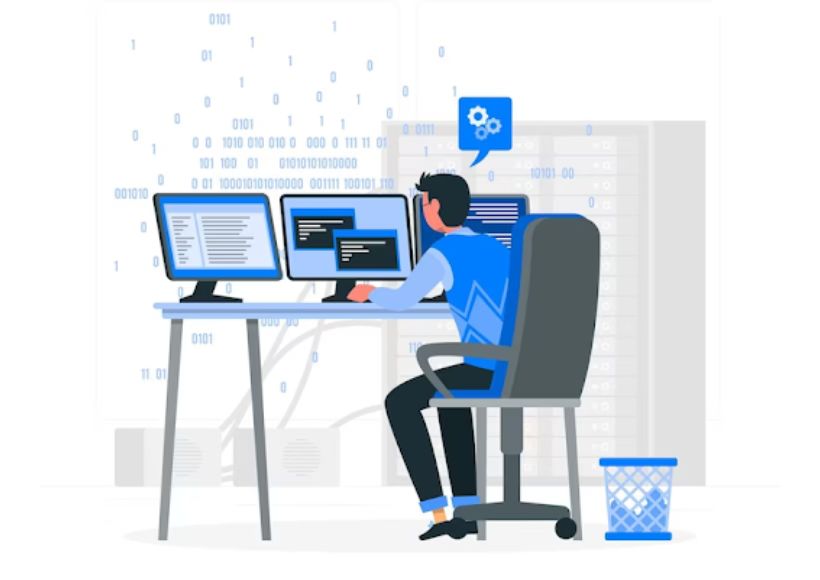Customization Without Complexity: Tailoring Apps With Low-Code Development Solution

In the fast-paced realm of application development, the ability to customize software solutions to meet unique business needs is a competitive advantage. However, achieving customization often comes at the cost of complexity, time, and resources. Enter the low-code application development solution – a transformative approach that empowers businesses to achieve deep customization without drowning in intricate coding. In this blog, we’ll explore how low-code development solutions enable customization that aligns with your business goals, all while keeping complexity at bay.
Table of Contents
Understanding Low-Code Development Solutions
Low-code application development solutions offer a streamlined approach to creating software applications. They equip technical and non-technical developers with a visual interface and pre-built components, eliminating the need for extensive hand-coding. This visual approach abstracts complex coding, making it easier for developers to rapidly design, prototype, and implement applications.
Customization Redefined
Traditional software development often involves building applications from the ground up, requiring intricate coding for even the smallest changes. This intricate coding can result in long development cycles, hindered flexibility, and challenges when responding to evolving business requirements. Low-code development solutions disrupt this pattern by providing a canvas for customization without manual coding.
Advantages of Customization with Low-Code Solutions
1. Agility in Action: Low-code’s visual interface allows developers to swiftly tweak application elements, enabling agile response to user feedback, market shifts, and changing business demands. This agility drives innovation by letting you pivot quickly and adapt to new opportunities.
2. Tailored to Your Needs: Low-code solutions enable deep customization that caters specifically to your business requirements. Whether altering workflows, adding new functionalities, or incorporating unique branding, low-code empowers you to create applications that reflect your business identity.
3. Rapid Prototyping and Iteration: Customization often involves multiple iterations to arrive at the perfect fit. Low-code’s rapid prototyping capabilities enable you to create prototypes quickly, test them, gather feedback, and iterate until you achieve the desired outcome.
4. User-Centric Design: Customization is not just about features; it’s about user experience. With low-code, you can design user interfaces that align precisely with user expectations, enhancing their interaction with the application.
5. Reduced Development Time: Low-code’s visual approach and pre-built components significantly reduce development time. This translates to quicker time-to-market for your customized applications, allowing you to seize opportunities promptly.
Real-World Customization Scenarios
1. Retail Industry: Imagine a retail business that wants to personalize its mobile app to deliver tailored promotions to different customer segments. With a low-code development solution, the business can easily create rules-based logic to ensure each user sees the most relevant offers.
2. Healthcare Sector: In the healthcare sector, a hospital might need a customized patient management system that aligns with their specific workflows. A low-code solution allows them to configure the system to match their unique processes without requiring extensive coding.
3. Financial Services: Financial institutions often require custom data analysis and reporting dashboards. Low-code empowers them to design these dashboards according to their precise needs, ensuring that the application is a strategic decision-making tool.
Navigating Complexity with Low-Code
While low-code development solutions offer a simplified approach to customization, it’s essential to address potential complexities:
1. Balancing Customization and Out-of-the-Box Features: Striking the right balance between custom-built functionalities and out-of-the-box features is crucial. While customization is valuable, relying solely on it can lead to over-complication and potential technical debt.
2. Ensuring Scalability: Customization should not hinder scalability. Ensure that your low-code solution supports scalability as your application evolves and grows.
3. Compliance and Security: Customizations should adhere to industry regulations and security standards. Low-code solutions must enable compliance without sacrificing customization.
The Role of Developers
In a low-code environment, developers evolve into orchestrators and creators. They leverage pre-built components to assemble applications and focus on designing intricate workflows, integrations, and custom logic. Developers still play a vital role in ensuring that customizations align with business goals, maintain application performance, and adhere to best practices.
Selecting the Right Low-Code Solution
When choosing a low-code development solution, keep the following factors in mind:
1. Ease of Use: Ensure the platform’s user-friendly visual interface aligns with your team’s skill set.
2. Customization Capabilities: Look for platforms that offer a wide range of customization options, from visual elements to logic configuration.
3. Integration Support: The solution should seamlessly integrate with your existing systems to ensure a cohesive technology ecosystem.
4. Scalability and Performance: Choose a solution that guarantees performance even as your customized application scales.
In Conclusion:
The dream of customization without complexity is no longer a distant goal – a reality made possible by low-code application development solutions. These platforms empower businesses to tailor applications to their unique needs, fostering agility, innovation, and alignment with business goals. By leveraging low-code power, you’re not just customizing software; you’re sculpting solutions that reflect your vision and drive your organization’s success.
Also Read : Webflow: A Future-Proof Web Development Platform




